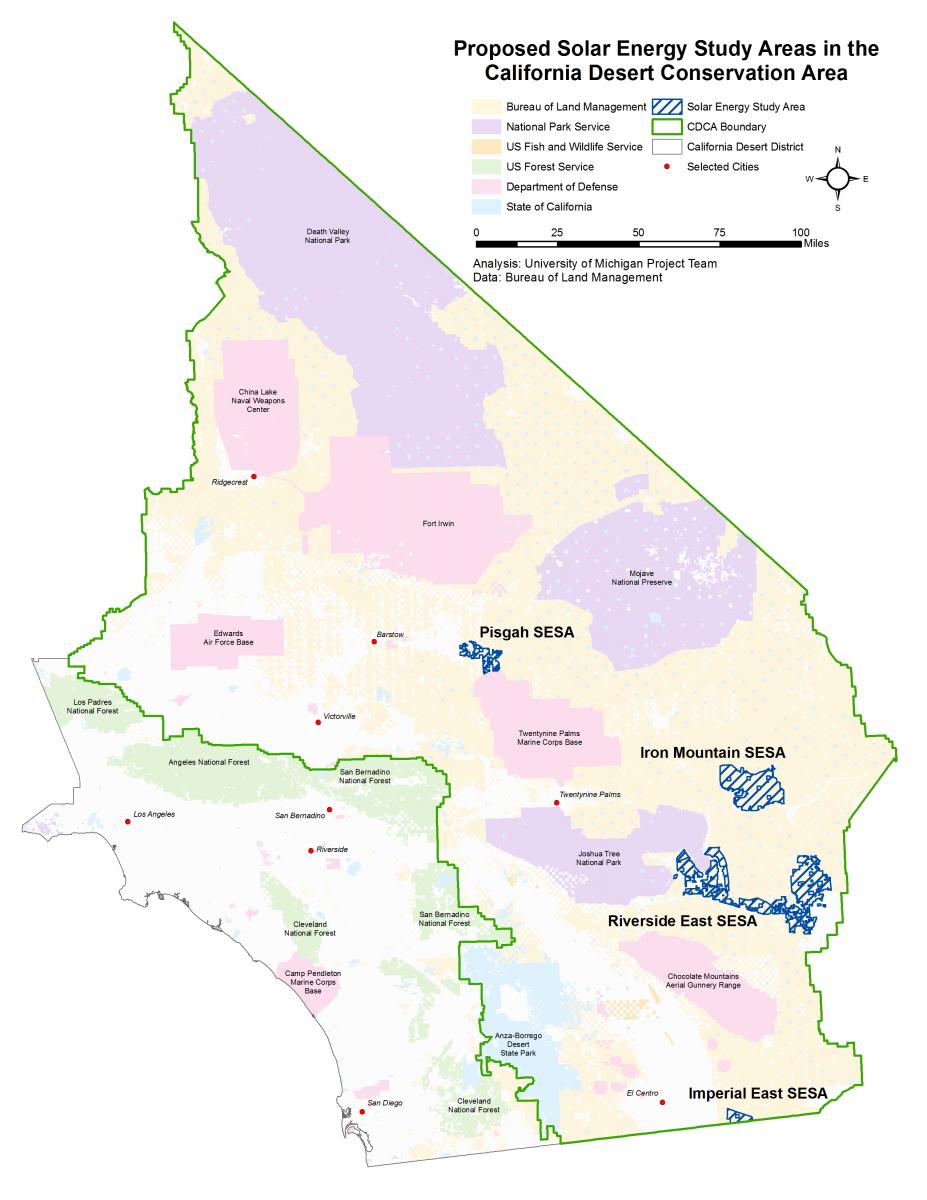Current Status of Development
In response to the overwhelming interest in solar development on public lands, the BLM and the DOE began developing a nationwide Solar Programmatic Environmental Impact Statement (PEIS) in May 2008 to guide future application decisions, judge the cumulative impacts of multiple projects, and identify and prioritize locations best suited for utility- scale solar development.1 During this effort, 24 Solar Energy Study Areas (SESAs) were identified. These areas have high solar resources, suitable slope, proximity to roads and transmission, contain at least 2,000 acres of public lands, and avoid sensitive and wilderness lands.2 The four SESAs in California, which total 351,049 acres (Map 1), contain 22 proposed solar facilities. These areas will undergo an in-depth Environmental Impact Statement (EIS) conducted through a National Environmental Policy Act (NEPA) process during the PEIS to determine their suitability for solar development. The PEIS public scoping period ended in September 2009 and the BLM and the DOE are currently drafting the PEIS.
In the meantime, 10 of the proposed projects have elected to take advantage of stimulus money under the American Recovery and Reinvestment Act of 2009 (ARRA). In order to be eligible for federal funding the projects need to be ready for development by December 2010.3 While no solar projects have been approved as of March 2010, the BLM has pledged to complete an individual EIS for each of these “fast track” projects by the expiration date, despite the fact the PEIS has not been completed.
In addition to the nationwide Solar PEIS, in November 2008 the California Department of Fish and Game (DFG), the California Energy Commission (CEC), the BLM, and the US Fish and Wildlife Service (FWS) signed a Memorandum of Understanding (MOU) to establish the California Renewable Energy Permit Team. This team is responsible for creating a Desert Renewable Energy Conservation Plan (DRECP), which will be a conservation strategy to facilitate and streamline compliance with all applicable state and federal laws and identify renewable energy zones in the California desert.
1 U.S. Bureau of Land Management, Solar Energy Development Programmatic EIS, http://solareis.anl.gov/.
2 U.S. Bureau of Land Management, Solar Energy Study Areas, http://www.blm.gov/wo/st/en/prog/energy/solar_energy/Solar_Energy_Study_...
3 California Energy Commission, Memorandum of Understanding between the California Department of Fish and Game, the California Energy Commission, the Bureau of Land Management, and the US Fish and Wildlife Service, Regarding the Establishment of the California Renewable Energy Permit Team, 2008, http://www.energy.ca.gov/siting/mous.html.
